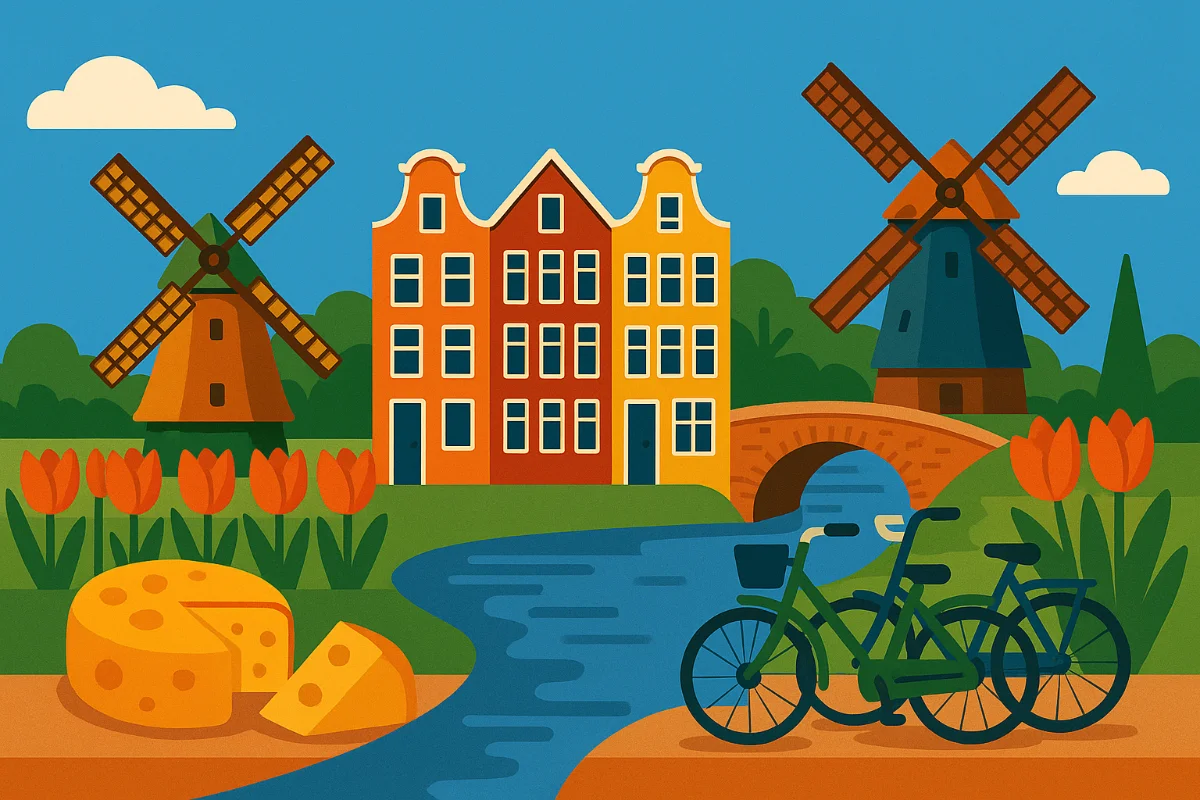Basic Dutch Sentence Structure (A1)
For simple, declarative sentences (statements), the most common word order in Dutch is similar to English:
Subject - Verb - (Rest)
- Subject: Who or what is doing the action (e.g.,
ik,de man,het huis). - Verb: The action word, conjugated to match the subject (e.g.,
woon,eet,is). - (Rest): This includes objects, time, place, manner, etc.
Examples:
Ik woon in Amsterdam.- Subject:
Ik(I) - Verb:
woon(live) - Rest:
in Amsterdam(in Amsterdam - place)
De vrouw drinkt koffie.- Subject:
De vrouw(The woman) - Verb:
drinkt(drinks) - Rest:
koffie(coffee - object)
Wij leren Nederlands.- Subject:
Wij(We) - Verb:
leren(learn) - Rest:
Nederlands(Dutch - object)
Het is vandaag mooi weer.- Subject:
Het(It) - Verb:
is(is) - Rest:
vandaag mooi weer(nice weather today - description + time)
Key Point: The conjugated verb is almost always the second element in a main clause statement. Even if you start with something else (like time), the verb comes next, followed by the subject (this is called inversion, covered later).
- Example:
Vandaag woon ik in Amsterdam.(Today - Verb - Subject - Rest)

